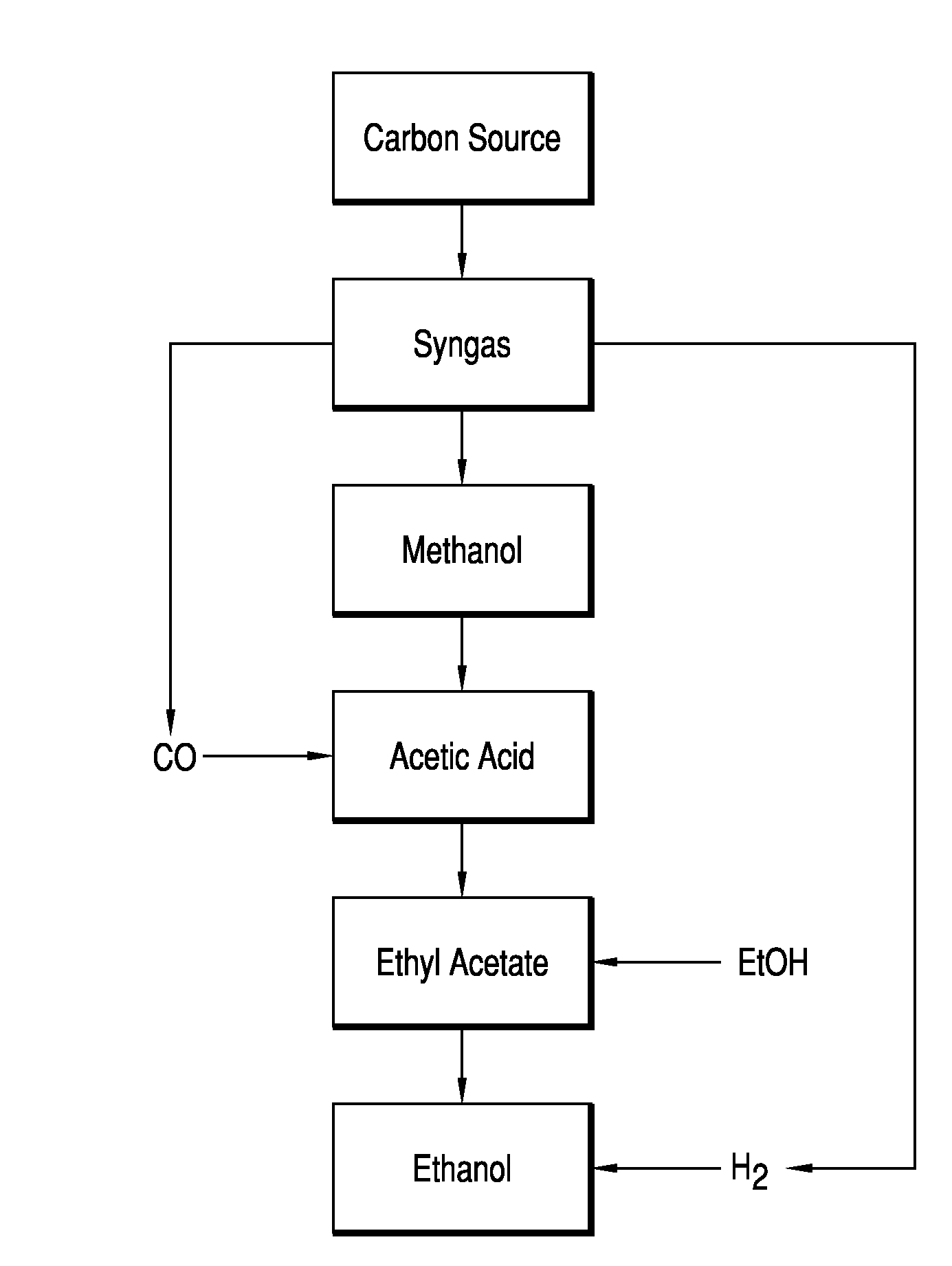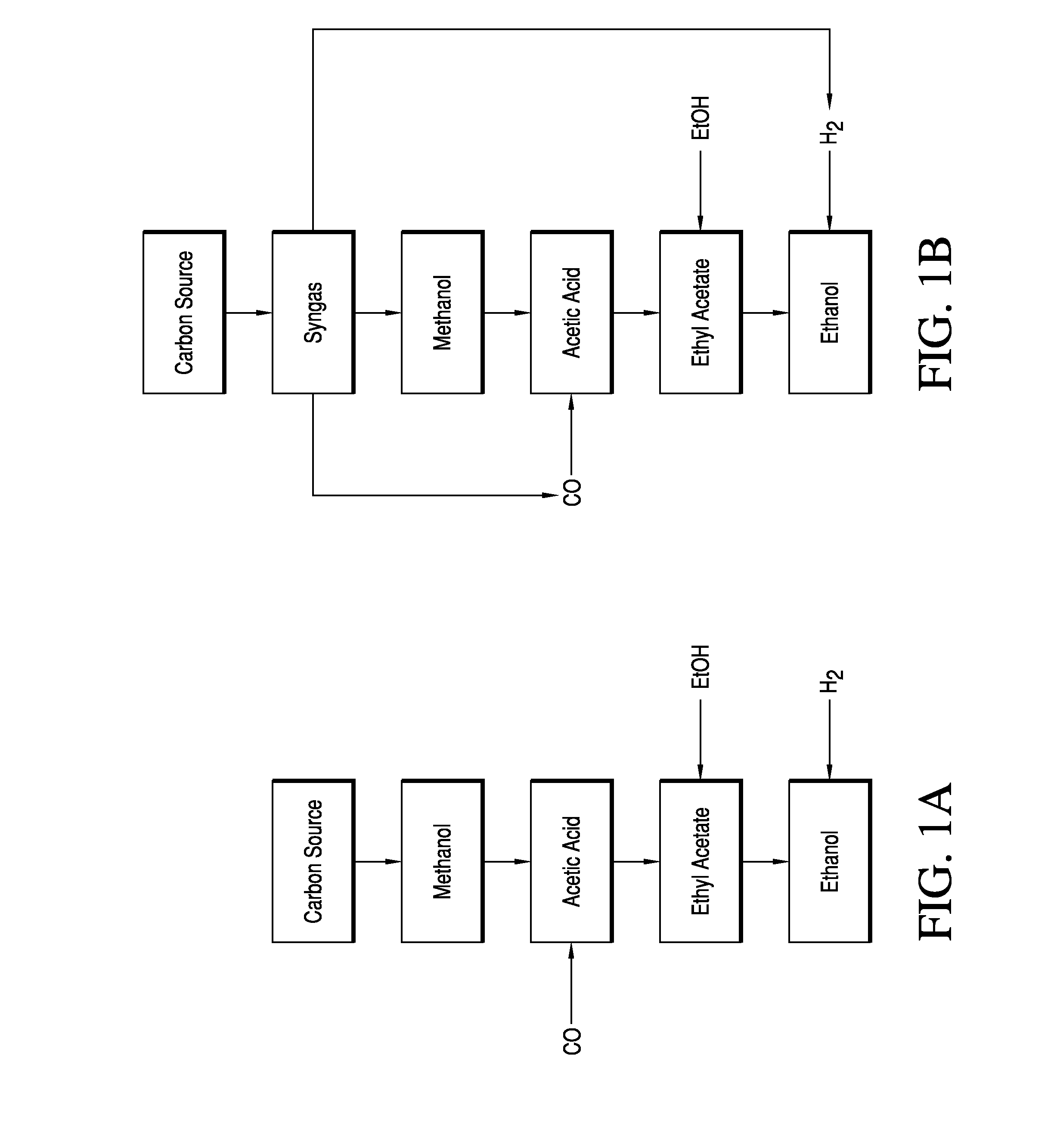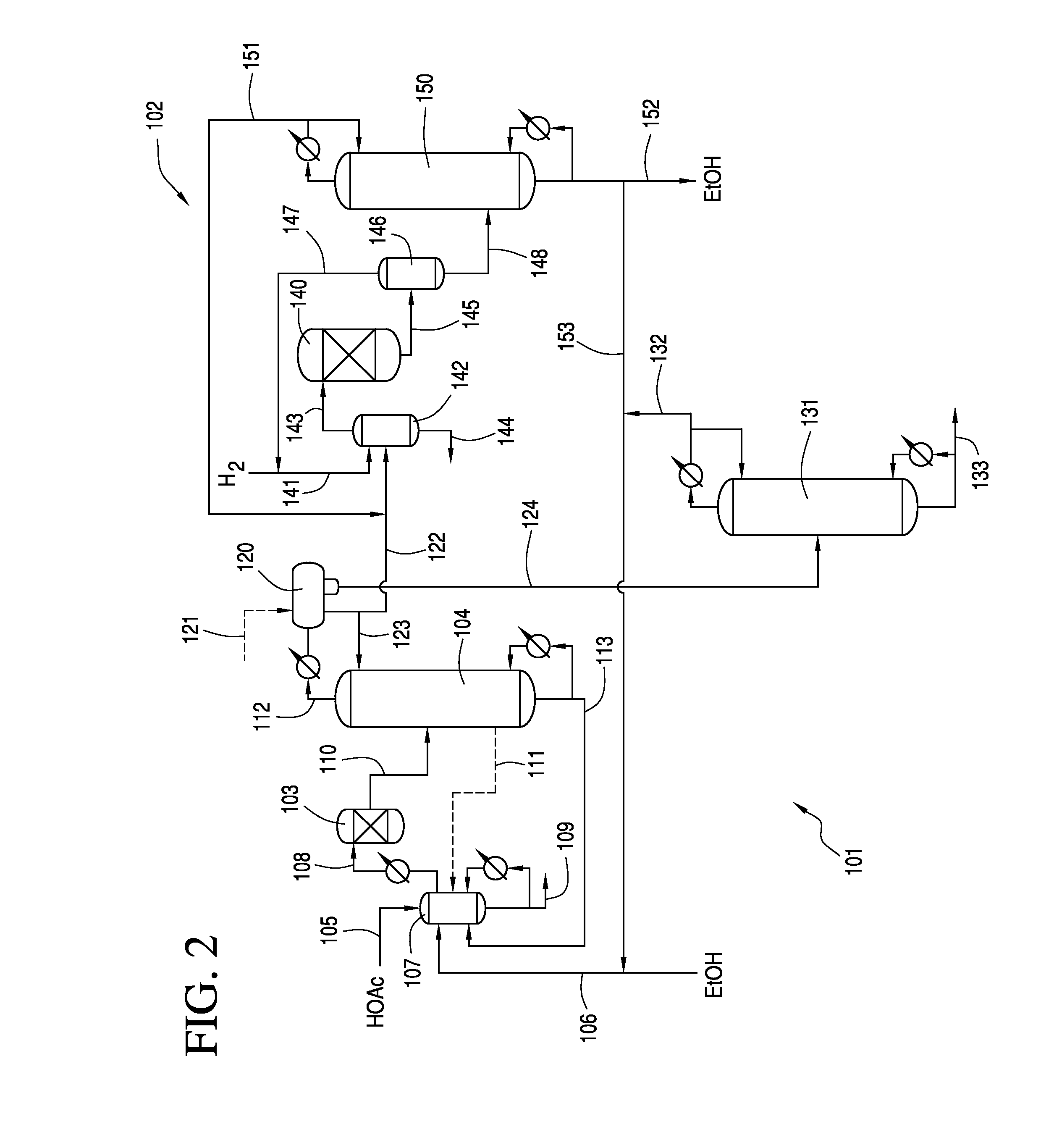Process of Recovery of Ethanol From Hydrogenolysis Process
- Summary
- Abstract
- Description
- Claims
- Application Information
AI Technical Summary
Benefits of technology
Problems solved by technology
Method used
Image
Examples
example 1
Vapor-Phase Esterification
[0191]Vapor-phase reactor feed mixtures of acetic acid (HOAc) and ethanol (EtOH) were passed over Amberlyst™ 36 ion-exchange resin (IER) catalyst (Rohm & Haas) in plug-flow tubular reactor at reaction temperatures in a range of 110° C. to 130° C., with an operating pressure of 101 kPa. The ion-exchange resin was diluted with 1 mm glass beads at a 2:1 dilution ratio. Liquid flow rates to the vaporizer were 6.7+ / −0.2 g / minute. The vapor-phase reactor feed mixtures contained excess molar acetic acid concentrations in an acetic acid / ethanol molar ratio range of from 1.07:1 to 2:1. The observed conversions of ethanol ranged from 88.9% to 94.9% as shown in Table 8. EtOAc is an abbreviation for ethyl acetate.
TABLE 812345678Mole Ratio (HOAc to EtOH)1.071.071.071.501.501.502.002.00IER Catalyst Volume (mL)6060606060606060Reactor Temperature (° C.)110120130110120130120130Combined Feed Rate (g / min)6.56.86.96.56.86.96.66.6Conversion of EtOH (%)88.990.489.590.992.693.194...
example 2
Vapor-Phase Esterification at 3:1 Molar Ratio
[0192]Similar to Example 1, vapor-phase mixtures of acetic acid and ethanol were passed over 60 ml Amberlyst™ 36 ion-exchange resin catalyst at reaction temperatures in a range of from 120 to 130° C. at an operating a pressure of 101 kPa. An reactor feed acetic acid to ethanol mole ratio of 3:1 liquid mixture was fed to the vaporizer at liquid flow rates in a range from 15.7 to 20.1 g / minute. The observed conversions of ethanol ranged from 93% to 95.3% with ethyl acetate productivities in a range of from 69.2 to 85.3 moles / L cat / hr.
TABLE 99101112IER Catalyst Volume (mL)60606060Reactor Temperature (° C.)120130120130Feed Rate (g / min)15.715.720.119.5EtOAc STY69.269.376.985.3(moles EtOAc / L cat / hr)Conversion of EtOH (%)95.095.395.293.0
example 3
Reduced Diethyl Ether Formation
[0193]A series of vapor-phase acetic acid esterification reactions with ethanol were passed over 60 ml of Amberlyst™ 36 ion-exchange resin catalyst at LHSV values in a range of from 10.4 to 10.7 hr−1), with reaction temperatures in a range from 110° C. to 130° C. When at feed mixture of acetic acid / ethanol mole ratios of 1:1 or 1.2:1, the expected temperature effect on diethyl ether formation is shown in Runs 13-18. When the mole ratio is increased to 1.5:1, surprisingly and unexpectedly, there is a reduced diethyl ether formation regardless of the temperature effect. Table 10 summarizes the results.
TABLE 10131415161718192021LHSV, hr−110.710.710.710.510.510.510.410.410.4HOAc / EtOH molar ratio1.01.01.01.21.21.21.51.51.5Reaction Temperature (° C.)110120130110120130110120130Diethyl ether (wt %)0.2220.651.45000.533000
PUM
| Property | Measurement | Unit |
|---|---|---|
| Fraction | aaaaa | aaaaa |
| Fraction | aaaaa | aaaaa |
| Fraction | aaaaa | aaaaa |
Abstract
Description
Claims
Application Information
 Login to View More
Login to View More - R&D
- Intellectual Property
- Life Sciences
- Materials
- Tech Scout
- Unparalleled Data Quality
- Higher Quality Content
- 60% Fewer Hallucinations
Browse by: Latest US Patents, China's latest patents, Technical Efficacy Thesaurus, Application Domain, Technology Topic, Popular Technical Reports.
© 2025 PatSnap. All rights reserved.Legal|Privacy policy|Modern Slavery Act Transparency Statement|Sitemap|About US| Contact US: help@patsnap.com



